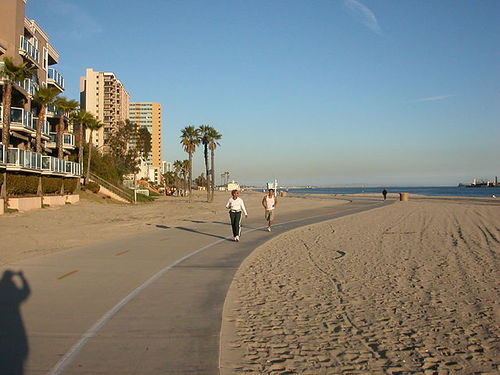(→Initiatives by topic: adding section) |
|||
| Line 34: | Line 34: | ||
== Interwiki links == | == Interwiki links == | ||
Wikipedia: [[wikipedia:Long Beach, California|Long Beach, California]] | Wikipedia: [[wikipedia:Long Beach, California|Long Beach, California]], [[wikipedia:Long Beach Green Belt path|Long Beach Green Belt path]] | ||
Revision as of 15:50, 29 October 2014

Initiatives by topic
Biodiversity
Wikipedia:
- Long Beach, Ecology: The city and its residents have initiatives underway to preserve and reclaim part of its ecological heritage. The RiverLink project has begun to revegetate the Long Beach stretch of the Los Angeles River with indigenous plants. Part of the remaining Pacific Electric right-of-way was cleared of nonnatives, planted with indigenous plants, and made accessible with foot and bike paths. This community open space is now known as The Long Beach Greenbelt and is the focus of continuing efforts in restoration and community education.
- The El Dorado Nature Center has changed its original "hands-off" approach and has begun to actively introduce indigenous species. The Los Cerritos Wetlands Study Group, state government agencies, and grassroots groups are collaborating on a plan to preserve Long Beach's last remaining wetlands. Long Beach is the first city in California to join the 'EcoZone' Program, intended to measurably improve environmental conditions through public-private partnerships. Such projects seek to reduce pollution, restore native habitat, and provide green areas for the city's residents to enjoy.
- Other places in Long Beach to see natural areas include Bluff Park (coastal bluffs), the Golden Shores Marine Reserve, the Jack Dunster Marine Reserve, Shoreline Park, and DeForest Park.
Coasts
Cycling
Bike Long Beach, Public Works program within the City of Long Beach
Environment quality
Wikipedia:
- Long Beach, Pollution: Long Beach suffers from some of the worst air pollution in the entire United States. Most of the city is in close proximity to the twin ports of Los Angeles and Long Beach, and the prevailing westerly-to-west-south-westerly winds bring a large portion of the twin ports' air pollution directly into Long Beach before dispersing it northward then eastward. Heavy pollution sources at the ports include the ships themselves, which burn high-sulfur, high-soot-producing bunker fuel to maintain internal electrical power while docked, as well as heavy diesel pollution from drayage trucks at the ports, and short-haul tractor-trailer trucks ferrying cargo from the ports to inland warehousing, rail yards, and shipping centers. Long-term average levels of toxic air pollutants (and the corresponding carcinogenic risk they create) can be two to three times higher in and around Long Beach, and in downwind areas to the east, than in other parts of the Los Angeles metropolitan area, such as the Westside, San Fernando Valley, or San Gabriel Valley. While overall regional pollution in the Los Angeles metropolitan area has declined in the last decade, pollution levels remain dangerously high in much of Long Beach due to the port pollution, with diesel exhaust from ships, trains, and trucks as the largest sources.
- Additionally, the Long Beach area is directly downwind of several of the South Bay oil refineries. Any refinery process or upset that results in the atmospheric release of refinery by-products (commonly sulfur dioxide) will usually impact air in Long Beach due to the west-south-westerly prevailing wind. Air quality events where large portions of the City are affected by strong-smelling refinery gas releases occur several times a year, although they largely go unreported.
- Similarly, the water quality in the Long Beach portion of San Pedro Bay, which is enclosed by the Federal Breakwater, commonly ranks among the poorest on the entire West Coast. Many Long Beach beaches average a D or F grade on beach water quality in the Beach Report Card published by Heal the Bay. The Los Angeles River discharges directly into the Long Beach side of San Pedro Bay, and conveys a large portion of all the urban runoff from the entire Los Angeles metropolitan area directly into the harbor water. This runoff contains most of the debris, garbage, chemical pollutants, and biological pathogens that are washed into storm drains in every upstream city each time it rains. Because the breakwater prevents normal tidal flushing and wave action, these pollutants build up in the harbor. The water enclosed by the breakwater, along most of the city's beaches, can be subject to red tides due to this stagnation as well. Because of these factors, the water in Long Beach is often unsafe for swimming.
Food
Interwiki links
Wikipedia: Long Beach, California, Long Beach Green Belt path